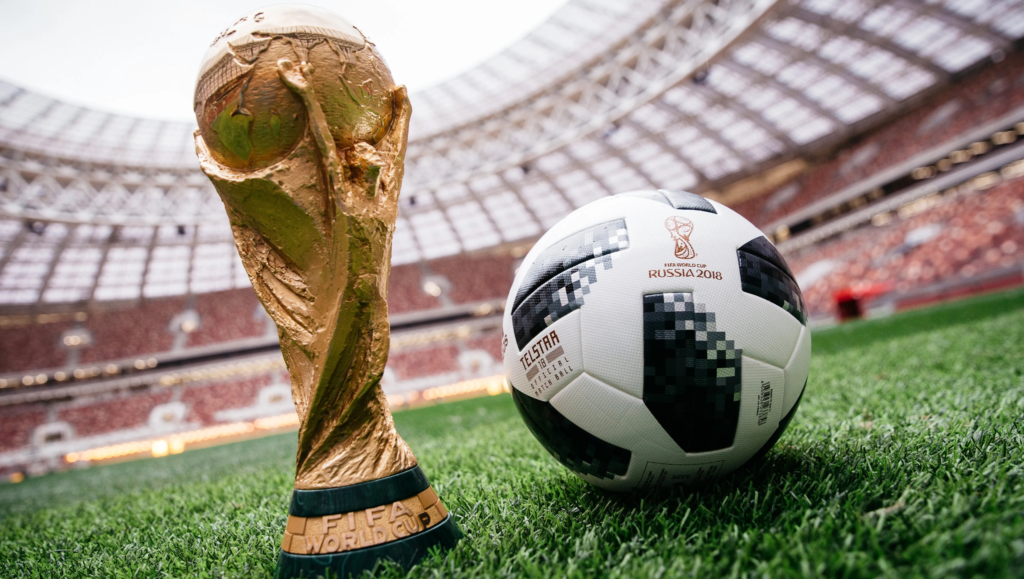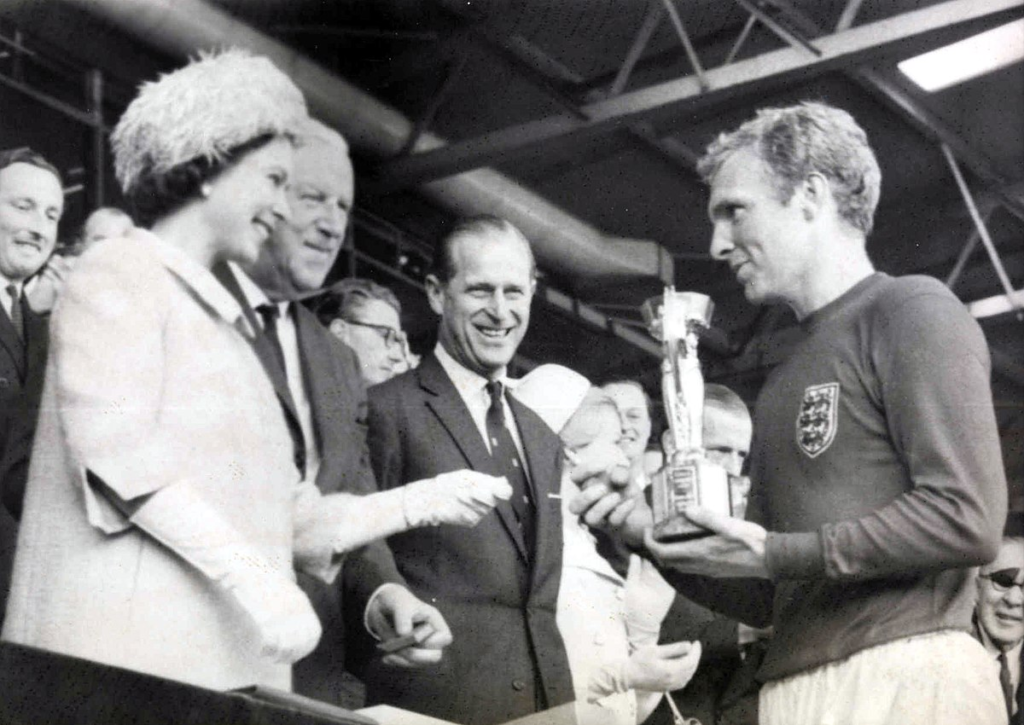The FIFA World Cup Trophy is the most prestigious in all soccer. There have been two versions of the trophy. The first, the Jules-Rimet Trophy, was awarded to the winner of the World Cup from its first edition in 1930 until the ninth edition of the tournament in 1970 in Mexico. It was then replaced by the FIFA World Cup Trophy, which has been awarded to every winner of the tournament from Germany in 1974 through to today. Those interested in knowing what the FIFA World Cup Trophy is made of should continue reading below.
Is the FIFA World Cup Trophy Solid Gold? The current FIFA World Cup Trophy is made of 18-karat gold with bands of malachite running around the base. It is claimed that the FIFA World Cup Trophy is solid gold, but it seems more likely that the trophy is hollow for reasons we will get into over the rest of this article. Even if hollow, the gold on the trophy alone is worth over $250,000.

The Jules-Rimet Trophy
Before we get into the debate about the current FIFA World Cup Trophy being solid gold, it is worth looking at the history of the trophy that it replaced.

Originally called “Victory” but more often known simply as the “World Cup,” this trophy was renamed the Jules-Rimet Trophy in 1946 in honor of Jules Rimet. Rimet was the FIFA President in 1929 who oversaw the vote passage to establish the competition.
This trophy was not truly made of gold. Instead, the Jules-Rimet Trophy was made from gold-plated sterling silver. It was 35 centimeters (14 inches) high and weighed 3.8 kilograms (8.4 pounds).
The trophy had a weird and interesting history. In 1938 the Italian vice-president of FIFA took the trophy from a bank in Rome (Italy was the current champion) and hid it in a show box under his bed to stop the Nazis from seizing it. In 1966, just four months before the tournament, it was stolen while on display in England. It was found seven days later under a hedge by a dog named Pickles.
The trophy was won by Brazil for the third time in 1970. This granted them the honor of keeping the trophy forever, as Rimet had set as a stipulation in 1930. The trophy was stolen from the Brazilian Football Confederation in Rio in 1983 and is widely believed to have been melted down and sold.
The FIFA World Cup Trophy
When FIFA opened submissions for the new FIFA World Cup Trophy to be awarded at the 1974 World Cup, they received 53 entries from seven countries. The winner of the design contest was an Italian artist named Silvio Gazzaniga, with his 36.5 centimeters (14.4 inches), 6.175 kilograms (13.61 pounds) trophy being the iconic one we see up for grabs at World Cup’s today.
The claim that the FIFA World Cup Trophy is solid seems to have been debunked over the years based purely on the science of the trophy. Nottingham University chemistry professor Martyn Poliakoff conducted a study in 2010 that he believes proves once and for all that there is no way that the trophy could be made of solid gold.
Gold is one of the more dense metals, and Poliakoff’s calculations suggest that if the trophy were made of 100% solid gold, then, based on its dimensions, it would weigh at least 70 kilograms (154 pounds). In visual terms, that is about the same weight as a small adult. Given the ease with which the captains of the various World Cup winners have lifted the trophy over their heads over the past 50 years, this seems unlikely to be the case.
FIFA wants to keep the theory of the trophy being made of solid gold alive. The gold value of the trophy alone would be close to $3 million, let alone the intrinsic value of it being the World Cup trophy. Poliakoff believes that the term “solid gold” is being used loosely by FIFA here and that the trophy is much more likely to be made of a thinner layer of gold with a light metal such as steel in the middle.
Trophy Design
Whether it is solid gold or not, the design of the World Cup trophy is iconic. Gazzaniga described his design in this way:
“The lines spring out from the base, rising in spirals, stretching out to receive the world. From the remarkable dynamic tensions of the compact body of the sculpture rise the figures of two athletes at the stirring moment of victory”
The image of the two human figures holding up the earth on the trophy being held aloft is something that fans of any World Cup winning nation will never forget.
When fans might not know is that there is a plate on the bottom of the trophy on which the name and year of the winning nation are engraved after the tournament. This plate is replaced at the end of every cycle and has the name of the winning country engraved in their native language. This is because the winning nation no longer gets tot ake the World Cup for their four-year reign. Instead, the trophy is permanently displayed at the FIFA World Football Museum in Zurich, Switzerland.
The winning nation gets to take home and keep a bronze version of the trophy that is gold-plated. It is also worth pointing out that all this means that the FIFA World Cup Trophy cannot be won outright and kept like Brazil managed with the Jules-Rimet trophy. If that stipulation were in place, Germany would have got to keep the trophy as they became the first three-time winner of this version of the trophy when they did so in Brazil in 2014.
Without closer inspection, it will be impossible to know if the World Cup is 100% gold or a solid trophy with a lighter metal used inside. Either way, it seems fitting that the most iconic trophy in sport would have a little bit of mystery surrounding its materials and its construction.
